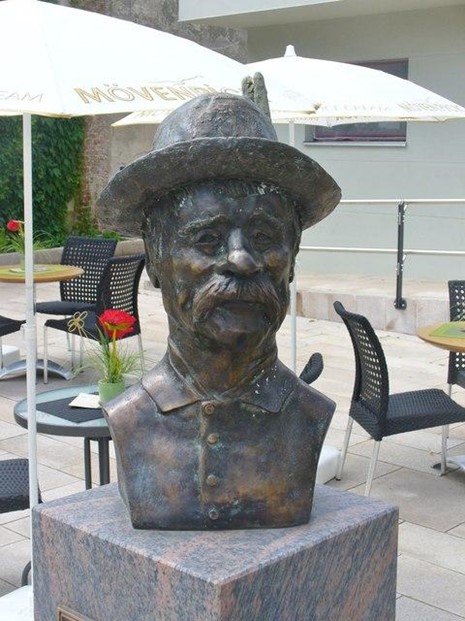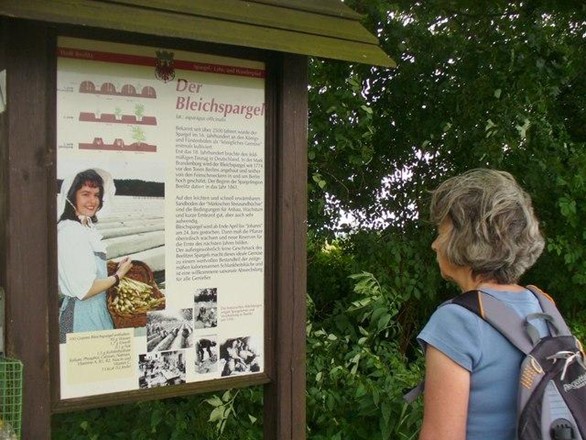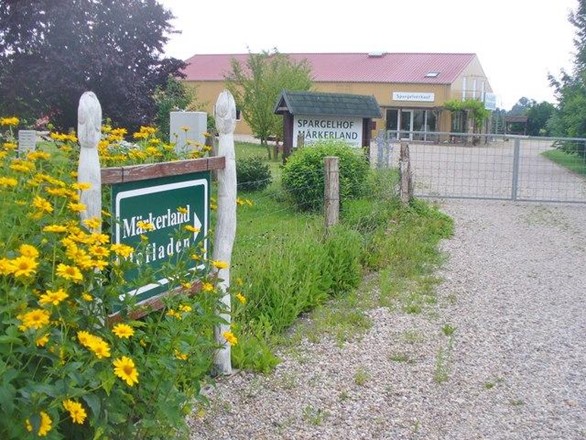“People who love to eat are always the best people.”
(Julia Child)
The story of the event or experience, how it started and evolved to its current form, when it started, what is unique about it, how popular the experience is with locals/visitors to the area etc…
Commercial asparagus cultivation in the Beelitz area goes back to the year 1861 when a farming citizen of the town, Carl Friedrich Wilhelm Herrmann, started planting the vegetable in one of his fields. Until then, asparagus was widely unknown in the region and could probably only be found at aristocratic tables. Herrmann soon found imitators as the “white gold” became increasingly popular. By 1900, the Beelitz area was a main supplier of asparagus at Berlin’s central market. During the second world war, asparagus cultivation lapsed.

The vegetable didn’t provide enough calories. For similar reasons it played a very minor role in the Democratic Republic of Germany’s collectivised agricultural production and only survived in private gardens and fields. In the early 1990s, local farmers and newcomers, however, successfully revived the tradition, creating a local association, Verein Beelitzer Spargel e.V., that today counts 14 asparagus producers along with the municipality of Beelitz. Continous efforts by the association to promote the “noble vegetable” finally showed results. Since 2018 asparagus from Beelitz benefits from the European Union’s label as a protected geographical indication (PGI). Early ideas to create a Beelitz Asparagus Route finally led to concrete plans in 2014 and their implementation in 2017, linking asparagus farms from the castle and lake of Blankensee in the east to Lehnin in the west.

The route has since been extended east to Trebbin. The association also created a small asparagus museum, today located in Schlunkendorf near Beelitz, that traces the history of asparagus cultivation in the area. A hiking and educational trail connects the town of Beelitz to this hamlet. The first Asparagus Queen has been elected in 1997. She occupies a central place during the symbolic first tapping in April and the yearly asparagus parade organised in Beelitz during the first weekend in June and represents Beelitz asparagus at regional and even national agricultural fairs. Since 2013, Beelitz officially received the right to call itself Spargelstadt (Asparagus Town).
Tell the customer what they will get and why they should include this experience in their itinerary.
What food/beverage is included, what producers they will meet,
During the asparagus season between April and June, asparagus farms are opening their gates to visitors who can inform themselves about the production, buy fresh asparagus and relish one of the numerous asparagus dishes or buffets served at temporary farm restaurants. The season opens with the first symbolic tapping in early April at one of the farms in the presence of the asparagus queen and ends on 24 June. Fresh asparagus is also sold at countless stands on the border of fields, along the roads or in villages and towns as well as in farm shops while local restarants give a prominent place to the “royal vegetable” on their menus.

A seasonal highlight is the Asparagus Festival in Beelitz which takes places during the first weekend of June. The festival, organised by local asparagus farmers, artisans, associations and schools, includes a parade of more than fifty decorated floats with an asparagus pyramid and horse-drawn carriages, accompanied on foot by Spargelfrauen, women in traditional costumes. Food stands, farms and restaurants in the town offer a wide range of asparagus dishes and there is also a programme of live music.
Outside the festival, visitors keen on learning more about the local history of asparagus can pay a visit to the asparagus museum in the neighbouring hamlet of Schlunkendorf. linked by an educational trail to Beelitz.

The over 50km-long Beelitz Asparagus Route is not so much a prescribed itinerary as an invitation to visit farms, the museum and other points of touristic interest. Those eager to discover the area on foot may want to walk the 24km-long asparagus trail (Spargelweg) which starts at Potsdam’s central railway station and ends in Beelitz. Bicycle enthousiasts will find a dense network of cycling paths. Food tourism does not end with the last asparagus being harvested. The area also offers other farm products worth exploring, such as blue berries in Summer, squashes and, after Saint Martin’s day, geese.
List of Local Producers
Spargel- und Gemüsehof Hugo Simianer und Söhne
Spargelhof Klaistow Produktions GmbH & Co. KG
Spargelhof Beelitz GmbH & Co. KG
Spargelhof Schlunkenhof GmbH & Co. KG
Obst- und Gemüsehof Hennickendorf GmbH
Hofladen Reesdorfer Bauern
The Beelitz Asparagus Trail is centred on the historic town of Beelitz, located 18 km south of Potsdam and about 50 km southwest of Berlin in the Brandenburg region, and extends from Blankensee (and Trebbin) in the east to Lehnin in the west. Beelitz can be reached by train from Potsdam and Berlin via the Berlin–Blankenheim railway line in about 45 to 60 minutes. By road it is connected to the Bundesstraße 2 and the Bundesautobahn 9.
The asparagus season opens in early April – the exact date depends on weather conditons and temparature – and ends on 24 June, the feast day of Saint John the Baptist.
The yearly asparagus festival takes usually place on the first weekend in June.
The asparagus museum in Mauerstrasse 12, Beelitz-Schlunkendorf, is open from April to the end of September on Tuesdays and Thursdays from 11 am to 4 pm or by appointment (Phone +4933204-39154 or -39155) throughout the year.
Entrance fee: €3, reduced fee €2; entry is free for children under the age of 12.
Find us here:
Verein Beelitzer Spargel e.V.
D-14547 Beelitz OT Schlunkendorf
E-mail: info@beelitzer-spargelverein.de
Phone: +49151 11 64 09 34
If you are interested Book now!
Map:


